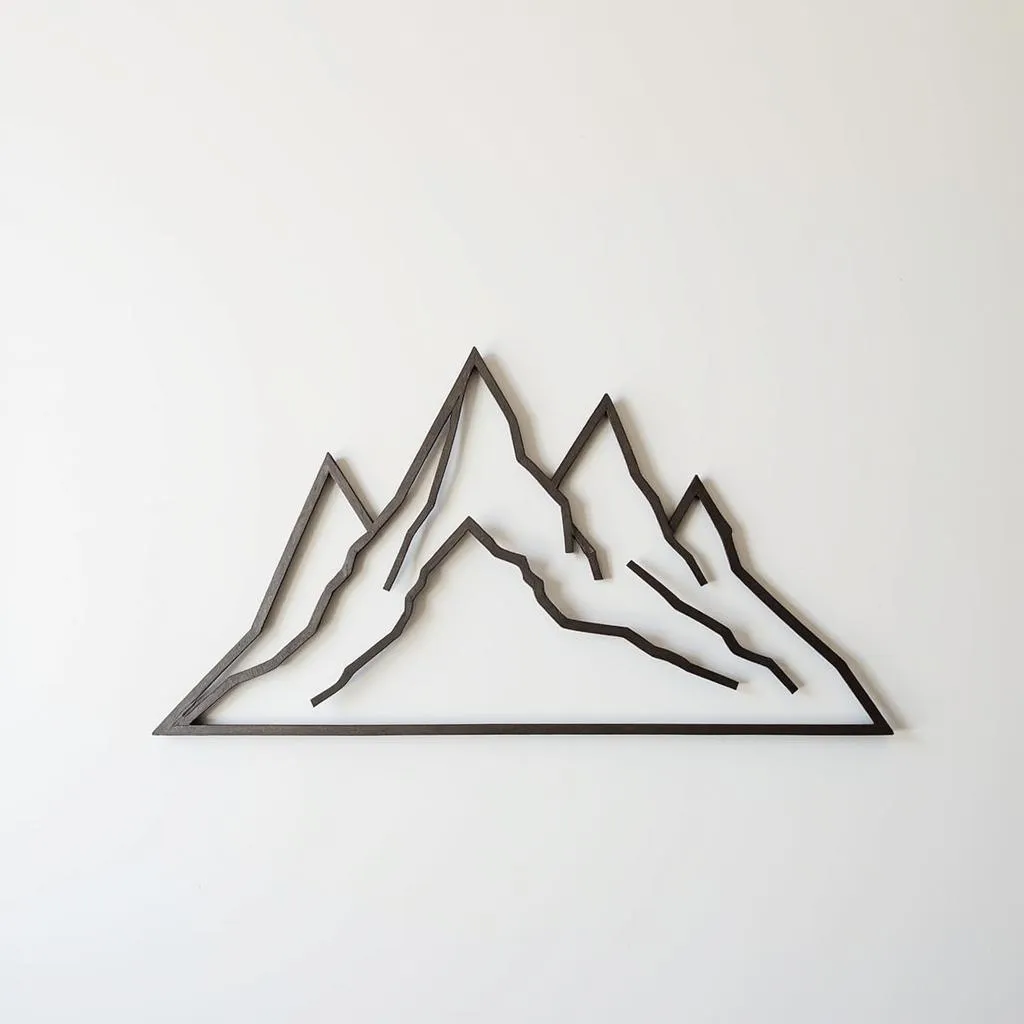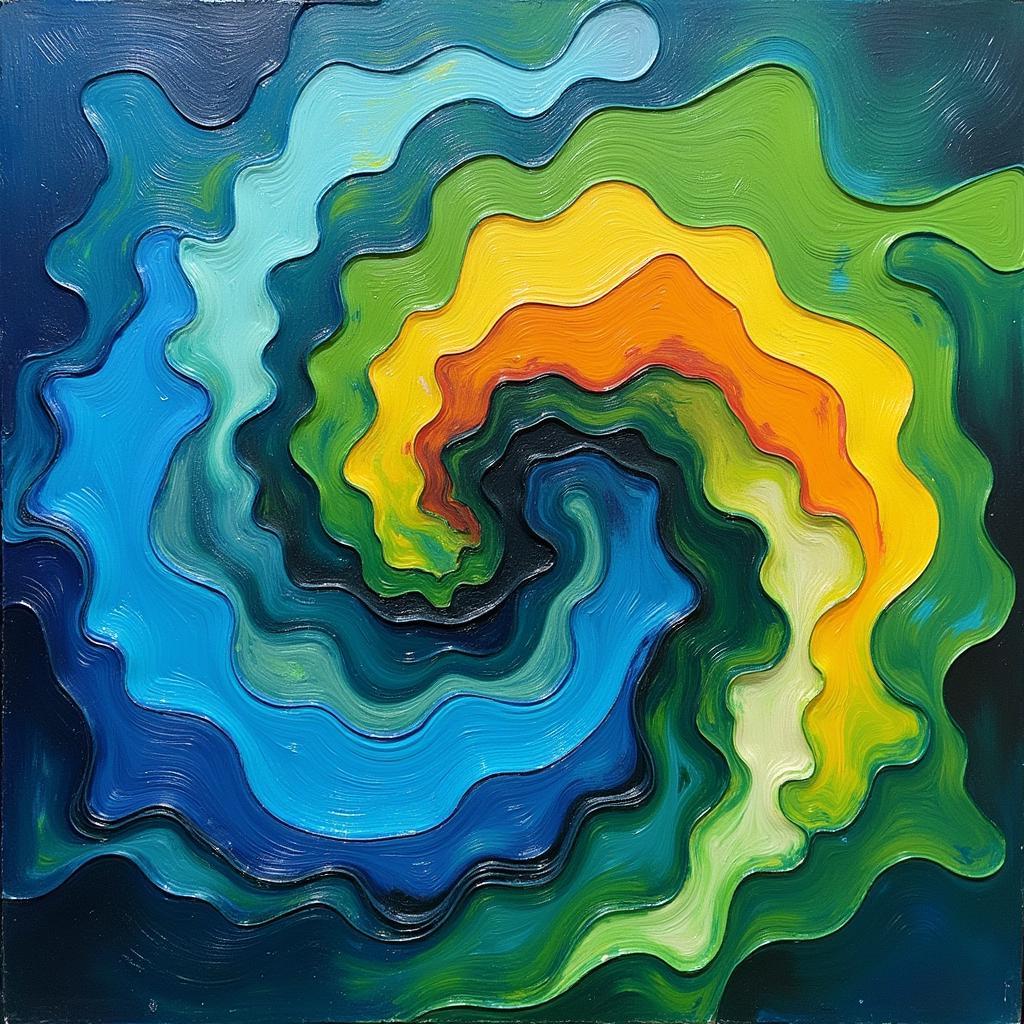Art Studio Lights: The Illuminating Factor in Your Creative Space
Art Studio Lights are an essential element for any artist, whether you’re a painter, sculptor, photographer, or digital artist. The right lighting can make or break your artwork, influencing color accuracy, mood, and overall atmosphere. Choosing the right art studio lights can be a daunting task, but it’s a worthwhile investment for any artist serious about their craft.
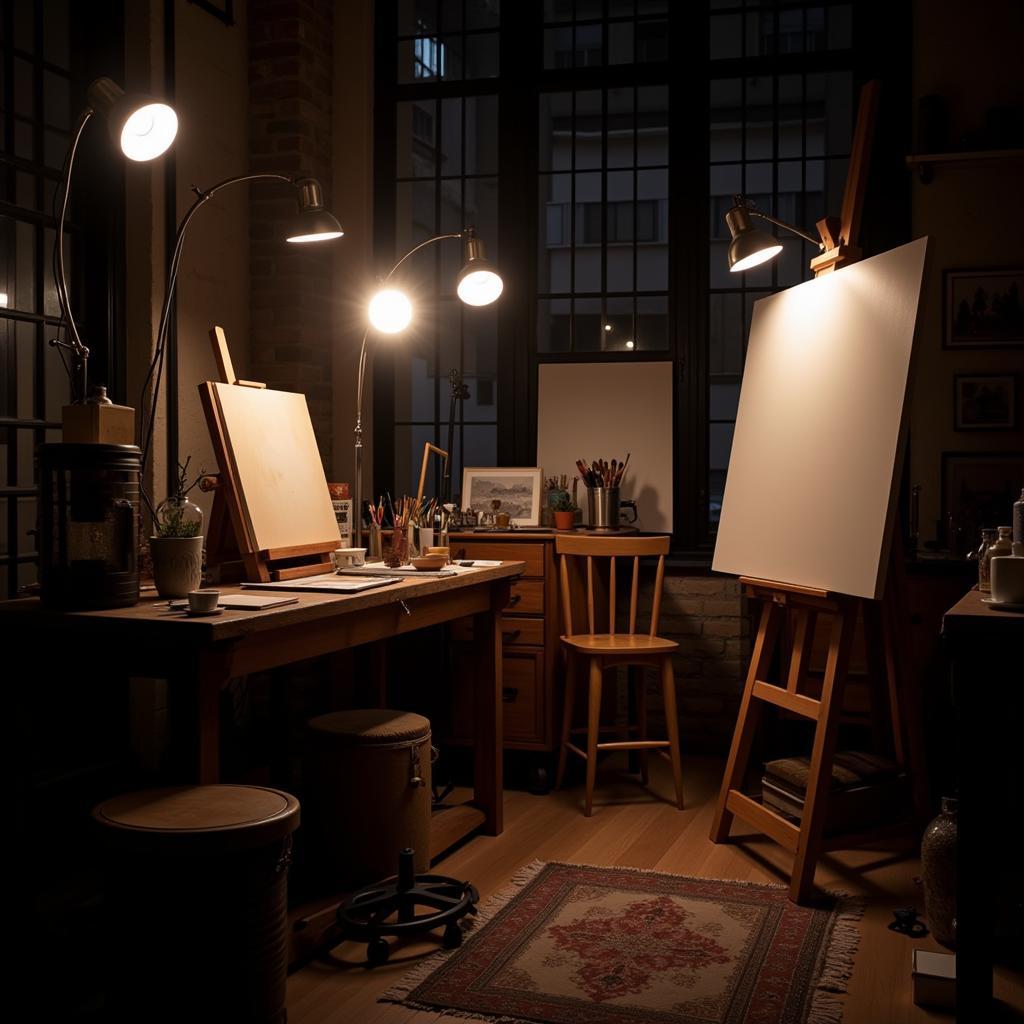 Choosing Lights for Art Studio
Choosing Lights for Art Studio
The Importance of Proper Lighting in Your Art Studio
Imagine trying to paint in a dimly lit room, squinting to discern colors and struggling to capture subtle details. Frustrating, right? That’s where art studio lights come in. They provide:
- Accurate color rendering: Essential for mixing paints and achieving true-to-life hues in your artwork.
- Reduced eye strain: Long hours in the studio are easier on your eyes with proper illumination.
- Enhanced mood and ambiance: The right lighting can inspire creativity and transform your studio into an inviting haven.
Types of Art Studio Lights
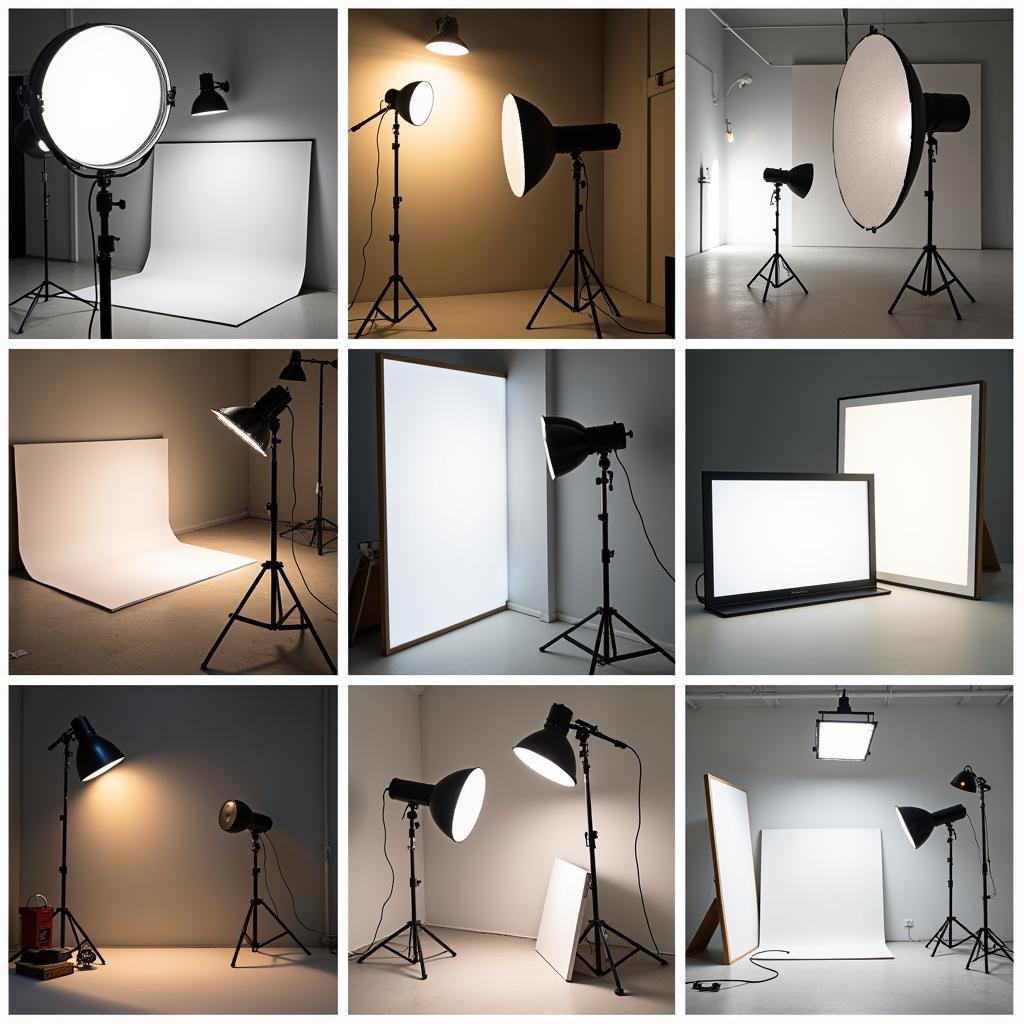 Different Types of Studio Lights for Artists
Different Types of Studio Lights for Artists
Choosing the best art studio lights depends on your specific needs and the type of art you create. Here are some popular options:
- Natural Daylight Lamps: Mimic the spectrum of natural sunlight, offering excellent color accuracy. Ideal for artists who work primarily during the day and prefer a natural light source.
- LED Panels: Energy-efficient and long-lasting, LED panels provide bright, even illumination. They generate minimal heat, making them suitable for working with delicate materials.
- Track Lighting: Versatile and adjustable, track lighting allows you to direct light precisely where needed. Perfect for illuminating specific areas of your studio or highlighting artwork.
Factors to Consider When Choosing Art Studio Lights
When selecting art studio lights, consider these factors:
- Color Temperature: Measured in Kelvin (K), color temperature affects the warmth or coolness of light. Lower Kelvin values (2700K-3000K) emit a warm, yellowish light, while higher values (5000K-6500K) produce a cooler, bluer light.
- Color Rendering Index (CRI): A measure of a light source’s ability to accurately reveal the colors of objects. Aim for a CRI of 90 or higher for optimal color accuracy.
- Brightness and Lumens: The brightness of light is measured in lumens. Consider the size of your studio and the level of illumination required for your artwork.
Setting Up Your Art Studio Lighting
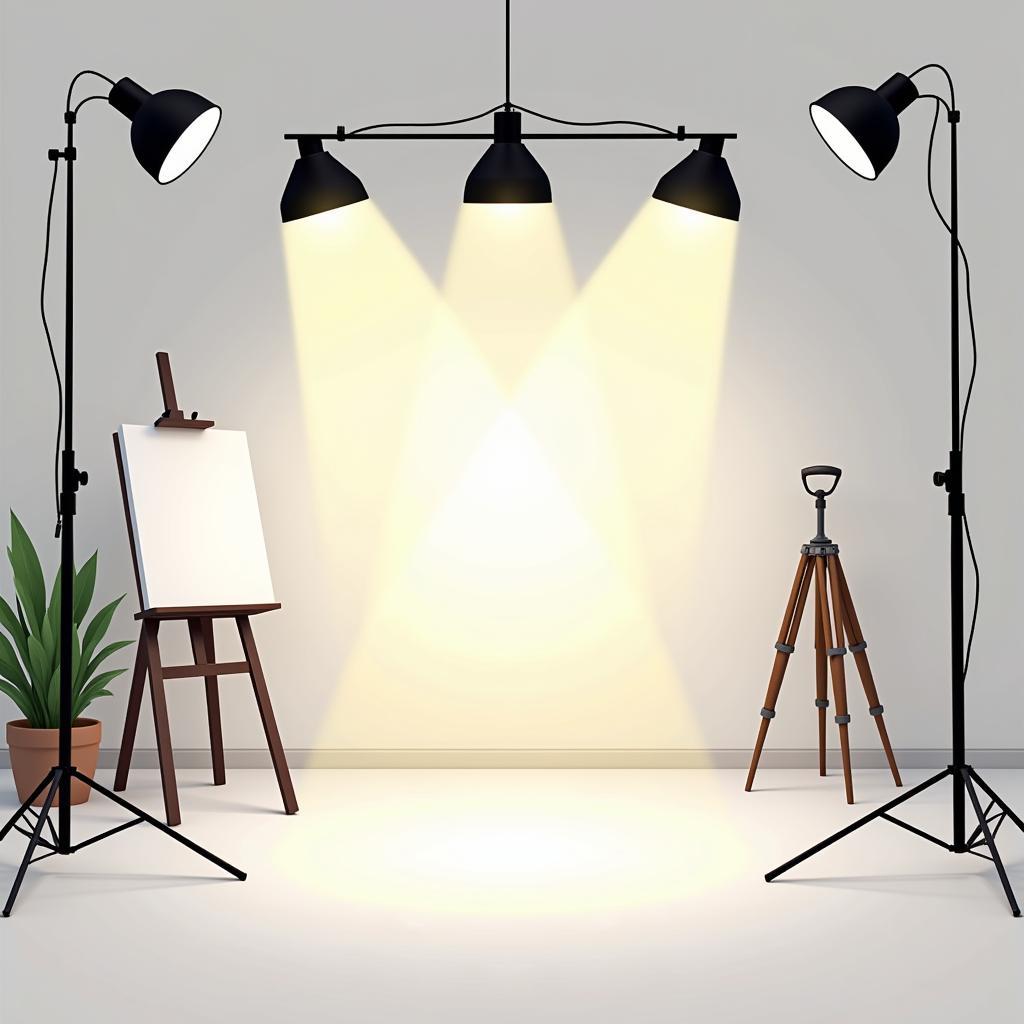 Setting Up Studio Lighting for Artists
Setting Up Studio Lighting for Artists
Strategically positioning your art studio lights is crucial for creating an optimal working environment. Here are some tips:
- Position your primary light source: For right-handed artists, the main light should be positioned on the left side of the easel to minimize shadows. Reverse this for left-handed artists.
- Utilize ambient lighting: Supplement your primary light source with ambient lighting to create a balanced and comfortable workspace.
- Control reflections and glare: Minimize glare and reflections by using diffusers or adjusting the angle of your lights.
Art Studio Lights: An Investment in Your Artistic Journey
Investing in quality art studio lights is an investment in your artistic growth. By providing accurate colors, reducing eye strain, and creating an inspiring ambiance, the right lighting can significantly enhance your creative process.
Remember, choosing the right art studio lights is a personal decision. Experiment with different types of lighting and setups to find what works best for you and your artistic style.
Frequently Asked Questions (FAQ)
1. What is the best type of lighting for an art studio?
The best type of lighting for an art studio depends on personal preference and the type of art being created. However, natural daylight lamps, LED panels, and track lighting are all popular options.
2. How important is color accuracy in art studio lighting?
Color accuracy is crucial in art studio lighting, as it allows artists to mix colors accurately and achieve true-to-life hues in their artwork.
3. Can I use regular household bulbs in my art studio?
While you can technically use regular household bulbs in your art studio, they may not provide the same level of color accuracy, brightness, or longevity as specialized art studio lights.
4. How do I prevent glare and reflections in my studio?
To minimize glare and reflections, consider using diffusers on your lights, adjusting the angle of your lighting fixtures, or positioning your easel strategically.
5. What is the ideal color temperature for an art studio?
A color temperature of 5000K-6500K is generally recommended for art studios, as it provides a neutral white light that closely resembles natural daylight.
6. How often should I replace my art studio lights?
The lifespan of art studio lights varies depending on the type of bulb. However, it’s generally a good idea to replace your bulbs every few years or as needed to maintain optimal brightness and color accuracy.
7. Where can I buy art studio lights?
Art studio lights can be purchased from art supply stores, online retailers, and some home improvement stores.
Need More Inspiration?
Explore these other areas of our website:
- Small Art Light: Discover compact lighting solutions for smaller studios.
- Grand Art Furniture: Find the perfect furniture to complement your well-lit studio.
For any questions or assistance with finding the perfect art studio lights for your needs, please contact us at 02462573573, email us at danteum@gmail.com, or visit our studio at Savico Megamall, 7-9 Đ. Nguyễn Văn Linh, Gia Thụy, Long Biên, Hà Nội 10000, Việt Nam. Our dedicated customer support team is available 24/7 to assist you.
